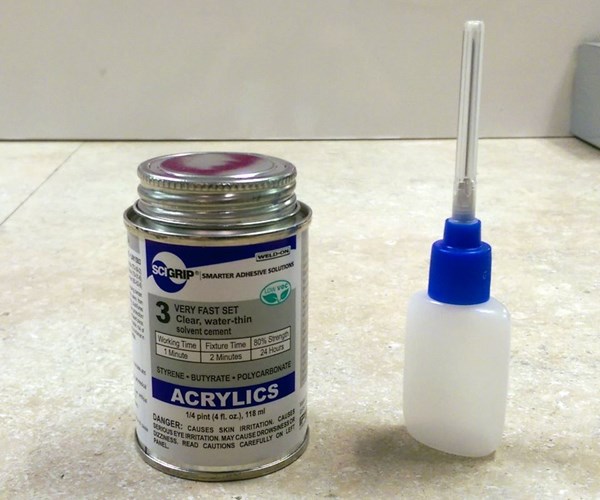Make Large Prototypes on a Small 3D Printer
To prove out the designs of brackets that are much larger than its 3D printer, this manufacturer prints the bracket models in pieces and assembles them into prototypes.

It is only a matter of time before we take it for granted that the typical machine shop is equipped with a 3D printer. Or so I argued in a recent commentary that described why a small 3D printer is a natural complement to a CNC machine tool.
Jon Kulikowski, president of Blum-Novotest Inc., responded to that commentary to carry my argument even further. The manufacturer of measurement technology, including laser toolsetting systems for machine tools, routinely uses 3D printing to make prototypes of mounting brackets tailored to particular machine tools before committing expensive production equipment to making this hardware. However, the company president went on to point out that “small” does not have to be limiting when it comes to a 3D printer. Blum-Novotest personnel build prototypes that are much larger than the printer by building them in pieces and bonding the smaller segments together.
Mr. Kulikowski says, “We routinely make prototypes 5 to 10 times the capacity of our 3D printer, a Stratasys Fortus machine with travels of 250 × 250 × 300 mm, by chopping up the model and putting ‘joints’ in it. We then print the parts and glue them together. The result is a prototype that is surprisingly accurate—within 200 microns—and amazingly strong. When we made our first one, I put it through my crude but effective ‘smash’ test, and it passed. Then my engineer who put it together started breathing again.”

Is this the key to expanding a 3D printer’s prototyping size? Blum-Novotest is not making functional parts, just prototypes to validate the design. Still, jointed prototypes pasted with acrylics glue have proven both accurate and strong.
The photo at the top of the page shows an example. Company engineer Brandon Rau holds the prototype for a bracket that will integrate laser toolsetting with a large Toshiba horizontal boring mill. The prototype will allow Blum-Novotest and its customers to be confident in the design and to discover any potential interference points at the machine.
“The prototype has a material cost of about $500. The final bracket priced out at just over $3,200. Obviously, finding mistakes with a $500 mock-up beats making a $3,000-plus bracket two times. It also lets the customer know exactly what they’re getting and how it will affect the machining envelope,” Mr. Kulikowski says.
Meanwhile, there is another benefit beyond the engineering efficiency. “Going to a customer with a 3D print is a marketing tool as well,” he says. “Some are more fascinated with the model than they are with the final product.”

A large, complex bracket can encounter interferences that can only be discovered in the actual assembly. Better to seek out those problems with a cheap prototype, says Mr. Kulikowski, rather than taking the risk of having to manufacture the same bracket twice.
Related Content
-
10 Ways Additive Manufacturing and Machining Go Together and Affect One Another
Forget “additive versus subtractive.” Machining and metal additive manufacturing are interconnected, and enhance the possibilities for one another. Here is a look at just some of the ways additive and machining interrelate right now.
-
5 Tips for Getting the Most From the Historic Return of North America’s Biggest Manufacturing Event
Plan. Explore. Think of the future. And oh yeah, the shoes. Here is how to get the most from the major manufacturing event that none of us have experienced in four years, and that many will be experiencing for the first time.
-
Additive/Subtractive Hybrid CNC Machine Tools Continue to Make Gains (Includes Video)
The hybrid machine tool is an idea that continues to advance. Two important developments of recent years expand the possibilities for this platform.

.jpg;width=70;height=70;mode=crop)














